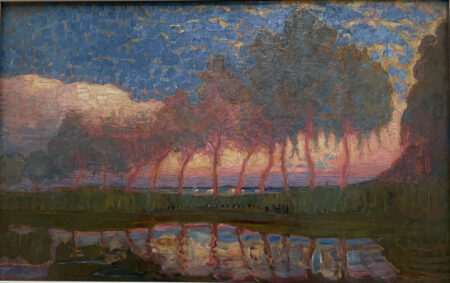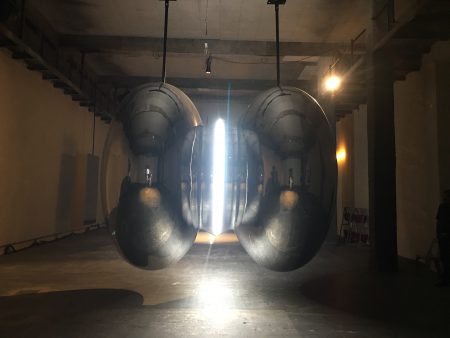Dormant mystery
In all major visual creation there lies a dormant mystery. Why does the artist decide to change style as if overnight? For the occasion of its summer exhibition, the excellent Beyeler Foundation in Basel has chosen one of the great textbook cases of the genre: Piet Mondrian (1872-1944).
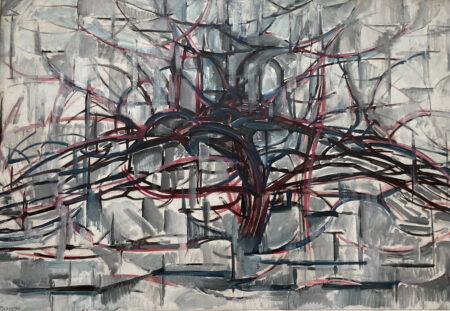
From trees to lines
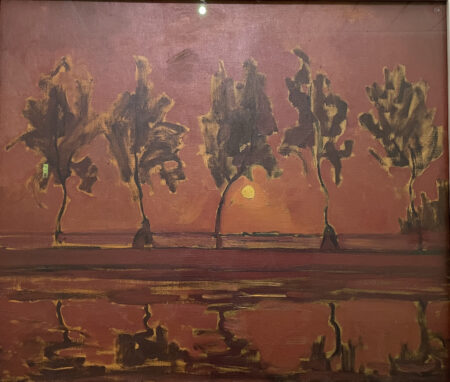
There was once a Dutch painter who depicted trees, landscapes and cathedrals and would end up painting surfaces of colours separated by lines. The Basel show is masterful. It has the title “Mondrian Evolution” and features 89 paintings dedicated exclusively to his slide from figuration towards abstraction. As the curator of the exhibition, Ulf Kuester, explains, what we tend to retain above all generally from Mondrian is his neoplasticism, when he paints surfaces with the help of lines placed at right angles in black, white and primary colours.
Natural evolution
But there is in fact a natural evolution to his work which was kickstarted with figuration. As he said himself he was “interested in abstraction which derives from nature”. To understand this kind of thought, you have to know who Mondrian was. Three elements are the guiding themes of his creation.
Obsession for structure

The first, which is fundamental, pertains to the fact that in all painting, across all periods, he primarily sought to represent a structure. So in one of his opulent canvases from his early years, “Wood” from 1908, which also strangely resembles a painting by Edvard Munch – even though we have no proof that he ever saw the works by the illustrious Norwegian artist, a Munch/Mondrian exhibition would be an extraordinary project – the composition is made up in three quarters of a series of vertical and horizontal lines. They correspond to trees, cut along horizontal lines in the background landscape. The entire base of the canvas is inhabited exclusively by horizontal lines which depict a body of water. Here there is also in Mondrian an almost epicurean dimension of colours. The marriage of hues in a harmony of blues, yellows and oranges is delectable.
New York city 1

In the catalogue Kuester likens it to a painting from 1941 by the same artist, “New York City 1”, which is structured in a similar way. Simply, the structure is pared back to the extreme in 1941.
Spiritual being
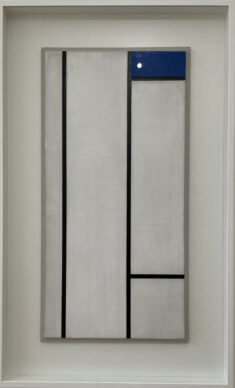
The second element: Mondrian was a spiritual being who was trying to get to the essence of things in his creations. He followed the theosophical doctrine, in search of an “inner illumination”. This was what motivated his permanent experiences.
Music and rhythm

Lastly Mondrian was crazy about music and abstraction is also a tool for the representation of rhythm. Against all expectations, the painter who people thought was austere also liked women a lot, especially dancing the foxtrot with them, which he discovered in Paris at the same time as cubism, followed by the boogie-woogie, which was a real revelation when he arrived in New York.
Dancing with Lee Krasner

Lee Krasner
Ulf Kuester reveals how the genius painter Lee Krasner (see the report dedicated to her here), also known as the wife of Jackson Pollock, was one of his dance partners. The last work by Mondrian from 1942-1943 which belongs to Moma (and which does not feature in the Swiss exhibition) is revealingly titled Broadway Boogie-Woogie. It is made up of countless coloured points which resemble the outline of a dance.
Maria Martins

Maria Martins
Incidentally, it was also offered by the Brazilian surrealist artist Maria Martins ( See the report about Maria Martins here) to the New York institution. Maria Martins exhibited in New York with Mondrian. This very sensual woman, although she was an excellent artist, is primarily known for her wild romance with Marcel Duchamp. Did she also dance with Piet Mondrian?
Hearing Nietzsche ‘s music
In this sense Nietzsche might have concluded with one of his famous phrases: “And those who were seen dancing were thought to be insane by those who could not hear the music.” It was this music that inhabited Mondrian.
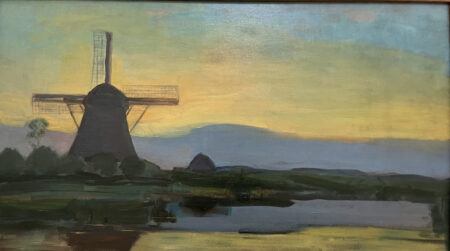
Until 9 October. Fondation Beyeler. Basel.
Support independent news on art.
Your contribution : Make a monthly commitment to support JB Reports or a one off contribution as and when you feel like it. Choose the option that suits you best.
Need to cancel a recurring donation? Please go here.
The donation is considered to be a subscription for a fee set by the donor and for a duration also set by the donor.

